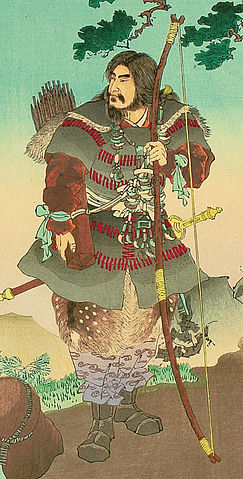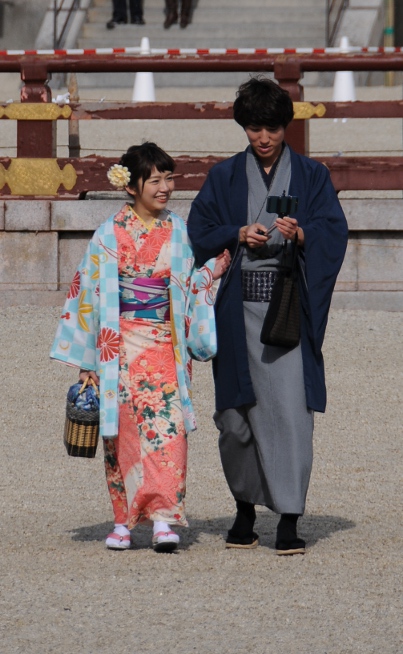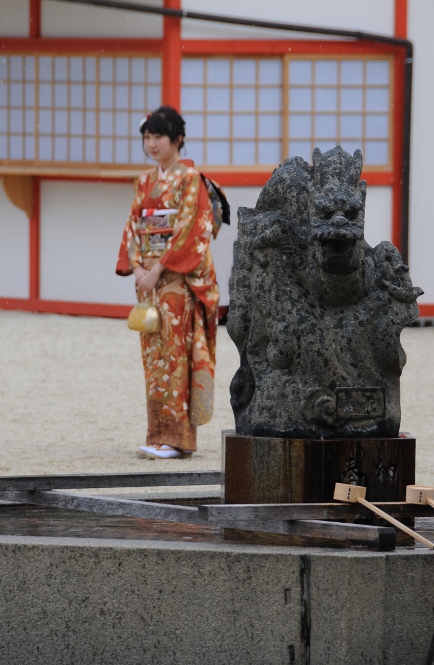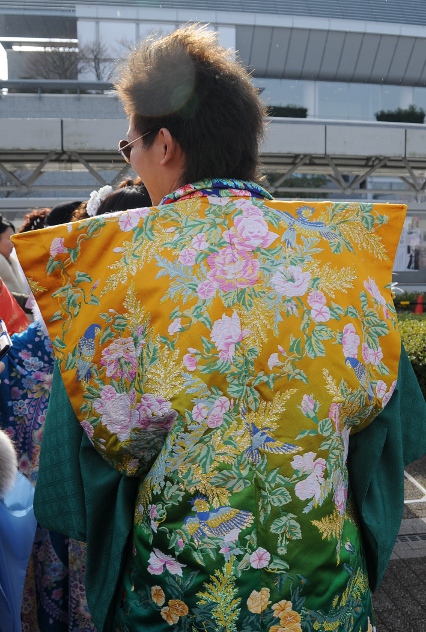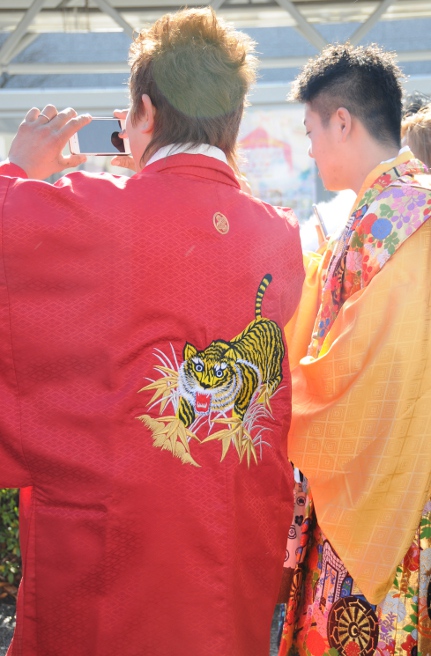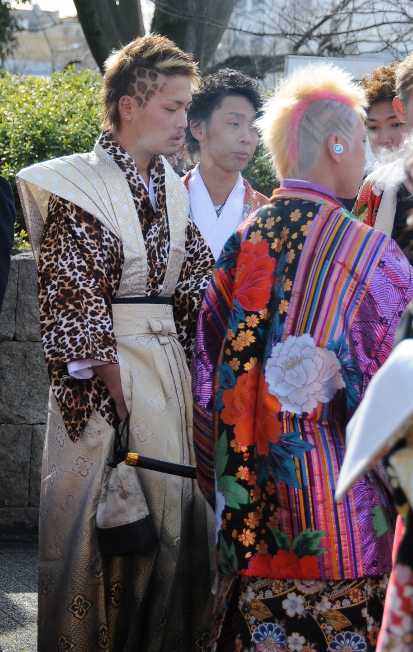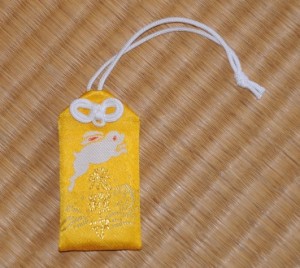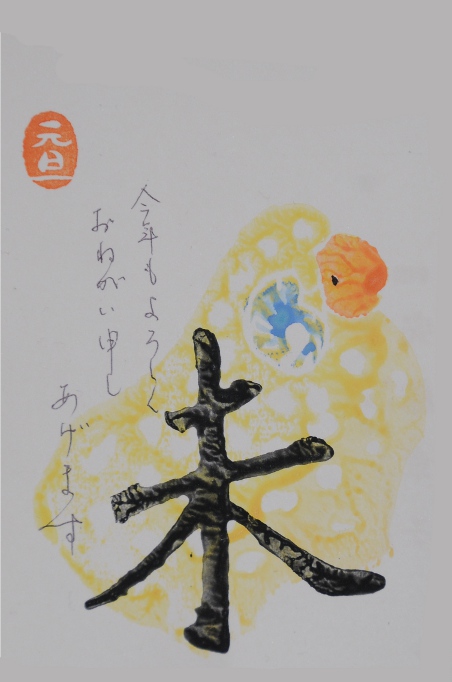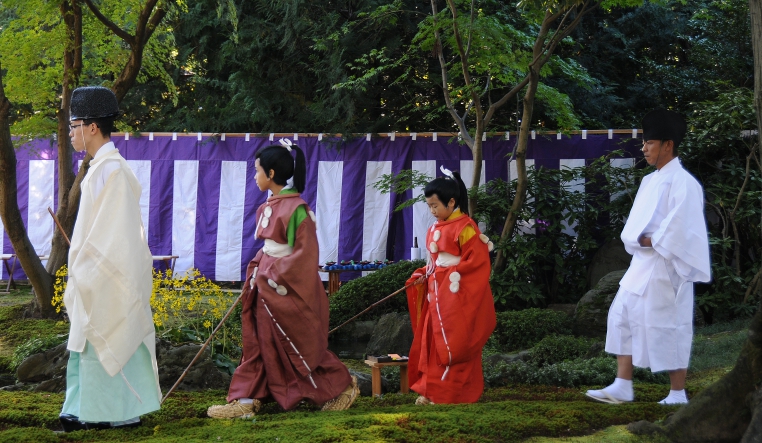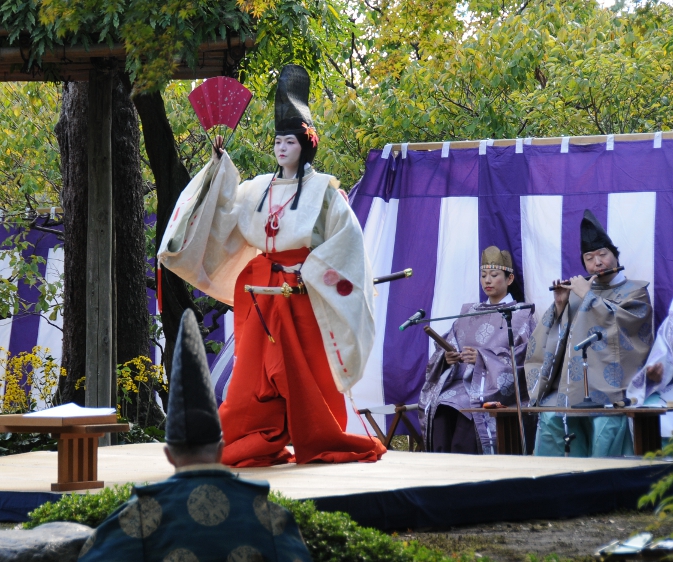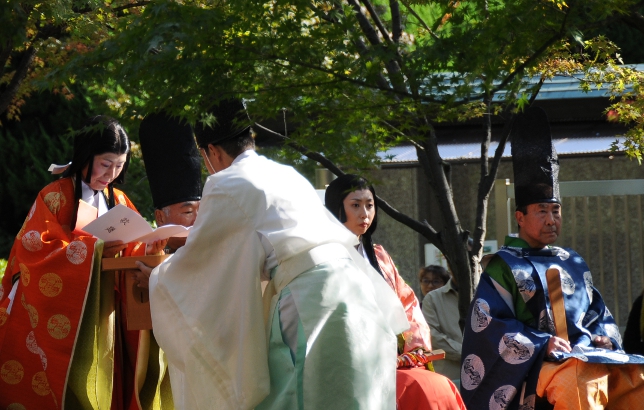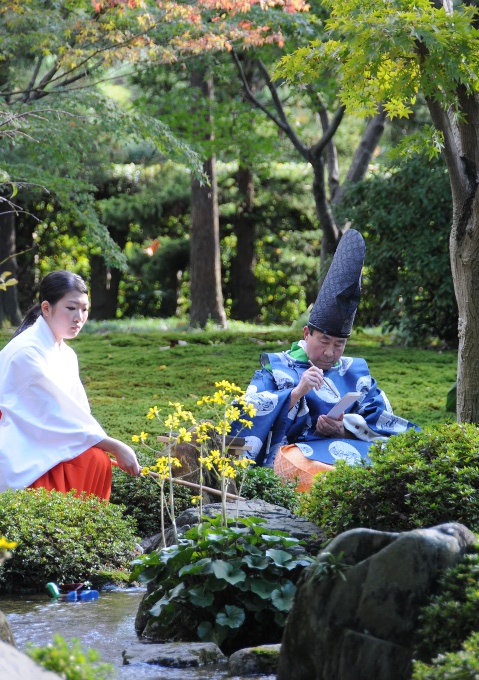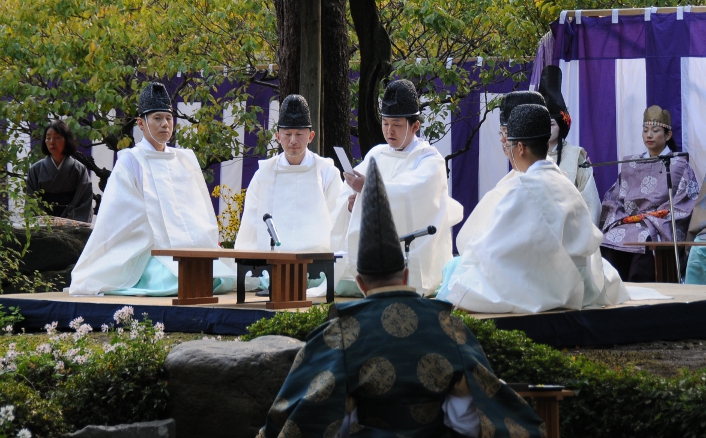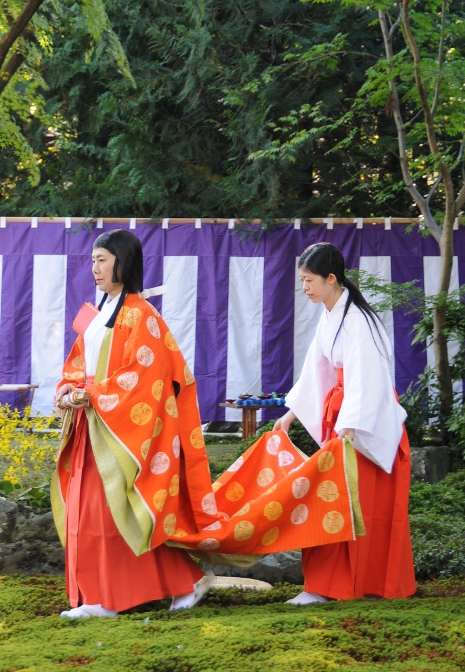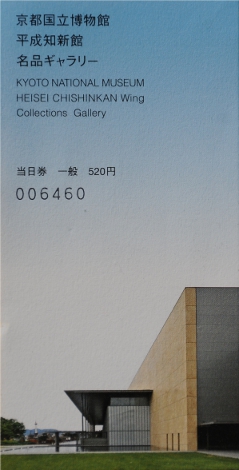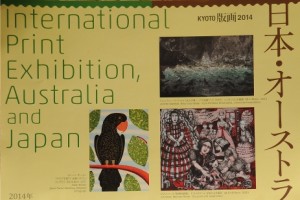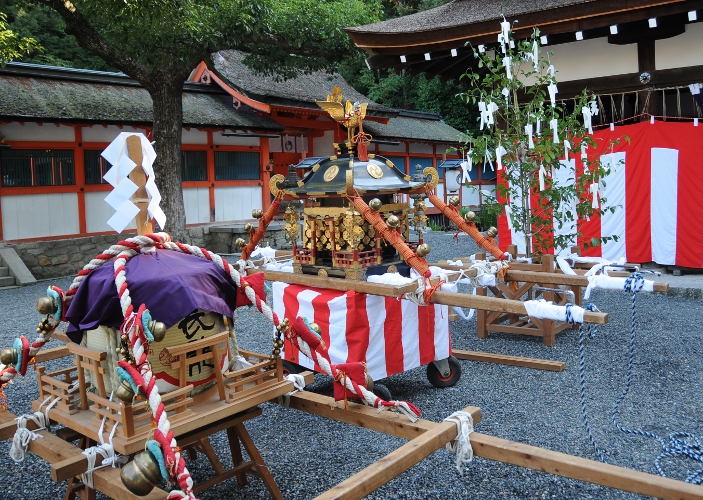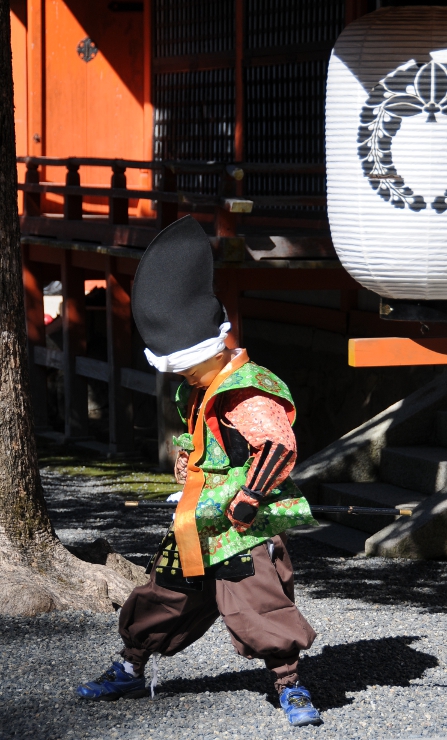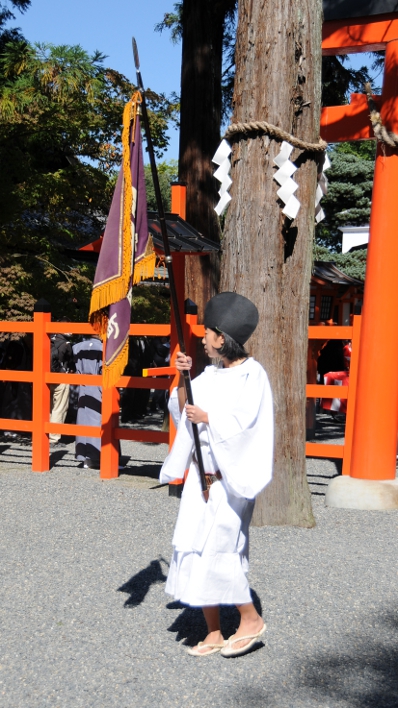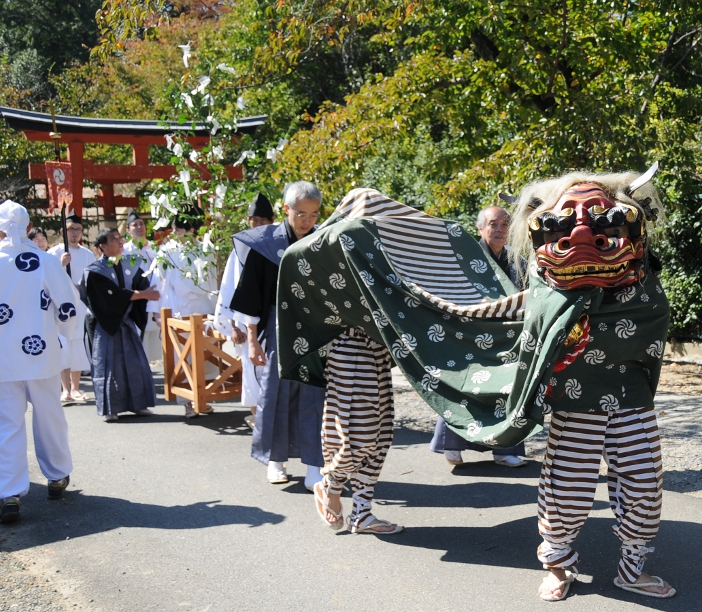The Geisha – or Geiko as they are called in Kyoto – are the incorporation of everything Japanese, not only for foreigners, but for the Japanese as well. A Geiko is a manifestation of tradition in everything she does, a masterpiece of art in everything she wears, and a showpiece of that Japan that is all but gone and only survives in tiny enclaves like Kyoto’s Gion. In short, they embody everything that is beautiful, sophisticated, and rare in Japan. And rare they are indeed as their art is a dying one, and an evening of personal entertainment with a Geisha is a costly enterprise.
So, you can probably imagine the lengths to which people are going to even only see a Geisha. People flock to the few yearly events with public appearances of Geiko and Maiko. They spend hours wandering the streets of Gion in the early evening in the hope of catching a glimpse of a Maiko on her way to an appointment. Some very obnoxious fellows even follow them around when they are going out, just to get that one perfect picture.
I can certainly understand the first thing – I have done so myself – but I find the second a little odd and the third outright rude and impolite. That’s probably the reason why after two years in Japan I only have taken very few photos of Geiko and Maiko. But then again, it’s not as if I had to resort to such methods, my approach is much more casual…
A while back, it was such a nice and sunny afternoon that I decided to go out. There is a tiny little cafe near the Philosopher’s Path, with maybe 15 seats, interesting decor, and great hot chocolate. I had been there before and I felt like walking a bit. When I arrived, there were five or six men occupying the largest table at the back – never before had I seen so many customers there. Well, that was not how I had envisioned my quiet afternoon, but I ordered and crouched down over my notebook anyway.
Then, suddenly, they arrived from the room in the back: a young Maiko, flawlessly dressed and made up, with perfect coiffure in which stuck those little seasonal hair ornaments that are often worn during only a few days. She was accompanied by a somewhat older woman, obviously a senior member from her teahouse. Both women then took seats on the large table and started chatting with the men waiting there.
I was very surprised and tried very hard not to stare. After a while of talking and drinking coffee the women got up and everybody left. The whole meeting – from the time the women came out from the back until the cafe was empty again – took not more than 15 minutes. Interestingly, it was the older woman accompanying the Maiko who paid the bill, which makes me assume that the gentlemen paid for the meeting including drinks beforehand.
Afterwards, the owner of the cafe, an old lady who speaks a little English, confirmed that that had indeed been a real Maiko. See, that’s how you get to see them close up, just go to the right cafe…

